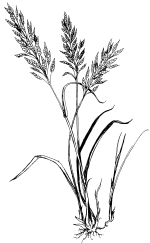
Geological History
The deep history of Minnesota had a profound and lasting effect on its natural landscapes. At Prairie Creek, evidence of major geological periods and events remains in the topography of the land, rock formations and vegetation. These lingering landmarks provide insight into the unseen history of the area and how today's Prairie Creek came to be.
Glaciation
Glaciers were huge ice masses that significantly impacted modern topography in Minnesota. When the glaciers began to melt and move they also carried different rocks and debris along with them.
The "Great Ice Age"
The most recent glaciation was the “Great Ice Age” which occurred approximately 2 million years ago when the majority of Minnesota was covered by glacial ice. The “Great Ice Age” drastically changed Minnesota’s topography and landscape, forming the foundation for the modern landscape.
The Holocene
After the "Great Ice Age" came the Holocene: a geological time period encompassing the beginning of the human species, the formation of modern-day ecosystems and the solidification of our current topography. The Holocene heavily contributed to the changes still seen at Prairie Creek.
Evidence of Glaciation at Prairie Creek
Glacial Sediment
Material left by glaciers is often referred to as glacial sediment and includes different types of materials such as glacial erratics, till, outwash, and glacial lake plains.
Glacial Erratics
A glacial erratic is a piece of rock differing in size and type from usual native rocks. They are used to determine ancient glacial movement, as glaciers transport rocks and stones that remain after the glacier melts.

Taken by Emily Hutchins

Taken by Anna Fierek, Sophie Homans, and Adam Berkebile

Taken by Anna Fierek, Sophie Homans, and Adam Berkebile

Taken by Emily Hutchins

Glacial Lake Plains
Glacial lake plains are areas with extremely smooth topographic features, like the smooth land found at Prairie Creek. Glacial lake plains form when the glacial ice blocked drainage routes, damming the running water and creating huge natural reservoirs.
As a glacial lake plain, Prairie Creek's topography is perfect for farming because, in some parts, the land is already extremely flat and smooth.
Land Formation
In addition to leaving glacial sediment, glaciers--and the movement of glaciers--altered the topography of the land. At Prairie Creek, the moraines demonstrate how the movement of glaciers changed the landscape to the hills and valleys we see today.

Till and Outwash
Glacial till is composed of clay, sand, gravel, and boulders. Till is the most common glacial sediment and can actually be found all over the state of Minnesota, and Prairie Creek as well.
Outwash is another type of glacial sediment found at Prairie Creek and is composed of sand and gravel.
Although the most recent glacier during the "Great Ice Age" never got far enough east to reach Prairie Creek, outwash still gathered here because the running water from the melting glacier nearby brought these materials.

Moraines
Moraines are areas with irregular topography without ridges, forming a landscape characterized by gently rolling hills or plains. Moraines are formed when of glacial debris, such as soil and rock, come together in areas that were glaciated.
Moraines from the most recent glaciers caused many of the hills and valleys that are found at the Prairie Creek.
End of Glaciation
11,000 Years ago marked the end of Glaciation and the last Ice Age in Minnesota. During this time, the great walls of ice began to retreat back North, leaving behind them a totally transformed landscape. The glaciers trapped large boulders and other sediments within their ice and during the retreat, the boulders cut into the land, carving out the various landforms that characterize the Minnesotan landscape as it is today.
Many landforms created post-glaciation, such as bluffs, valleys, lakes and erosion, continue to exist today in Minnesota and at Prairie Creek.
Bluffs
A bluff is characterized by steep sloping sides and rounded tops. Bluffs are usually found at the edge of bodies of water or, like at Prairie Creek, on the edge of a prairie. Bluffs are formed from either erosion from a body of water on a shoreline or from glaciation carving.

Terracettes
On prairie slopes, years of cattle traveling back and forth hills compact the soil, forming a unique land feature called a terracette. Terracettes guide plant dispersion among the slopes' different levels, proving useful for the land.
On Prairie Creek Wildlife Management Area, these terracettes are located on the slopes across of the former Koester home. The terracettes are an indicator of how grazing has affected the geological landscape of the prairie thus far.



Valleys
A valley is characterized by a low plain in between hills or mountains, usually with a stream running through the middle. Valleys are formed by erosion from a body of water and make up the low section of Prairie Creek.
Lakes and Erosion - Lake Agassiz
When a glacier recedes, it produces run-off from the melting and grating. This run-off runs through the land and has a big effect on the shape of the landscape.
After the "Great Ice Age," most of the run-off from the glacier was unable to drain so stayed on the land in Northern Minnesota and Canada. This created the largest fresh water lake in history, Lake Agassiz, whose waters stretched down into Southern Minnesota. These tributaries cut into the landscape, forming most of the lakes and other rivers that are still present in Minnesota. The Minnesota River is the last remaining tributary of Lake Agassiz and continues to supply water to the water-shed under Prairie Creek and the small stream that cuts through Prairie Creek.
Explore the prairie history by navigating the different periods of the site using the table of contents below.


